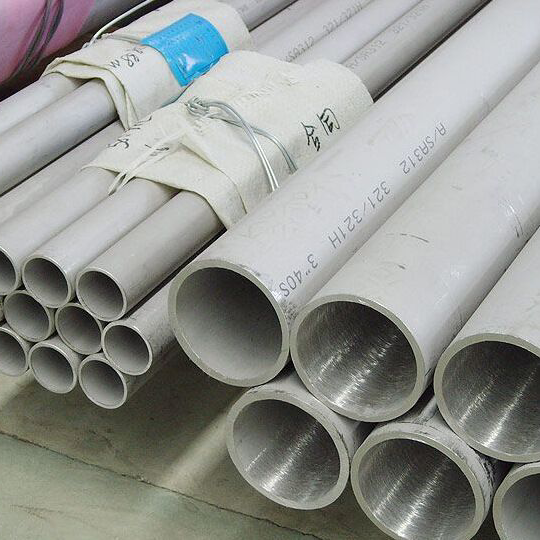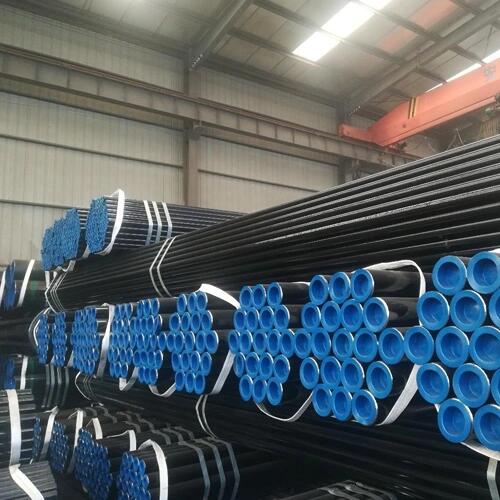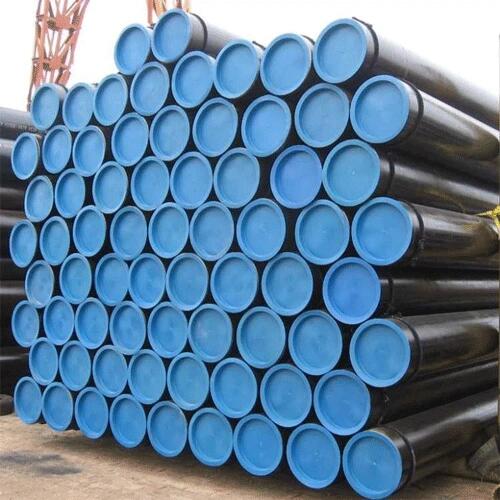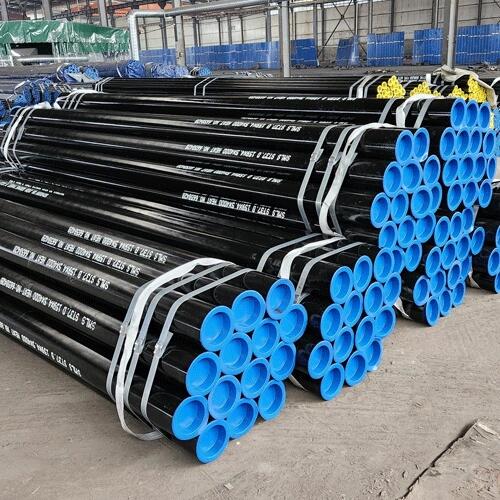Carbon steel pipe is a durable material made from carbon steel, a steel alloy with iron and carbon. Because of its strength and ability to withstand stress, carbon steel pipe is used in a variety of heavy-duty industries like infrastructure, ships, distillers, and chemical fertilizer equipment. Carbon steel pipe is a common type of steel pipe that is an alloy of iron and carbon. It has a higher carbon content, lower melting point and greater durability compared to stainless steel. Carbon steel is the most widely used engineering and construction material for industrial applications on a large scale, including marine structures, power plants, transportation, chemical processing and petroleum production and refining.
The main component in steel is iron, while percentages of carbon, manganese, aluminum and other components are added for the material to have the best characteristics, properties and performance for its intended use. Carbon Steel can be defined as the steel with carbon content between 0.05 – 3.8 percent by weight. The more percentage of carbon the steel has, the harder and the stronger it becomes; However, the high carbon content makes the material losing its ductility and weldability (Regardless heat treatment), as well as lowering its melting point.
Carbon steel is a steel with carbon content from about 0.05 up to 2.1 percent by weight. The term carbon steel may also be used in reference to steel which is not stainless steel; in this use carbon steel may include alloy steels. High carbon steel has many different uses such as milling machines, cutting tools and high strength wires. These applications require a much finer microstructure, which improves the toughness.
| Steel Standard | Steel Grade | Application | |
| ASTM A-53 | A | B | Mechanical and pressure applications, low pressure liquid transmission and other purposes. |
| ASTM A-252 | 1 | 2,3 | Standard pipes and tubes for piles, columns, structural and other mechanical uses. |
| ASTM A-106 | A | B | High heat, including process piping, boiling plants, compression stations and refineries. |
| JIS G 3466 | STKR400 | STKR490 | Civil engineering architecture and other structures. |
 8 differences between ASTM A312 304 and 316 stainless steel pipes
8 differences between ASTM A312 304 and 316 stainless steel pipes
 How to drill holes in ASTM A179 seamless steel pipes?
How to drill holes in ASTM A179 seamless steel pipes?
 What are the advantages of cold drawn ASTM A192 seamless steel pipe?
What are the advantages of cold drawn ASTM A192 seamless steel pipe?
 How to drill holes in ASTM A53 seamless steel pipes?
How to drill holes in ASTM A53 seamless steel pipes?